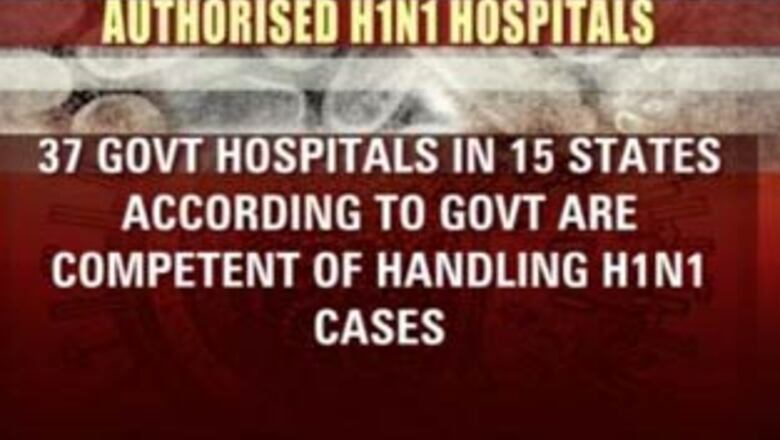
views
New Delhi: The clock is ticking. Every day almost 30-40 positive cases of H1N1 are being reported by the Central government.
But there is no way of keeping track of every person contracting the virus and the fear is that the actual figure could be lot more than being reported.
But as the country battles the pandemic, Ministry of Health seems to operating in a bubble.
The Ministry's draft action plan, showcased on its website, reads rather utopian and is even expecting cooperation from nine other ministries to handle the situation.
The Home Ministry has been given special responsibilities. It is expected to:
- Look out for H1N1 cases crossing into Indian territory
- Use state security forces for containment of population in infected states
- Provide forces for restriction of movement from infected localities
- Restricting gatherings at funerals and festivals
- Restricting large scale gatherings at festivals, political events
- Restricting large scale gatherings into airports and railway stations
But to expect the Ministry of Home Affairs to use security forces to restrict the entry and exit of people into the city is clearly an impractical idea.
When confronted with the impracticality of the plan, Health Minister Ghulam Nabi Azad had no answers.
The other shocking detail in the plan is that the Government admits 70 per cent of health infrastructure is controlled by the private sector which should, therefore, be allowed to share the burden of H1N1 - a step that has still not been taken.
“We have no problem with the private sector but they are not fit to carry out the tests,” said Minister of State for Health and Family Welfare, Dinesh Trivedi.
So while the Health Ministry may have an elaborate plan on paper, the practicality of the implementation hasn't been spared a thought.




















Comments
0 comment